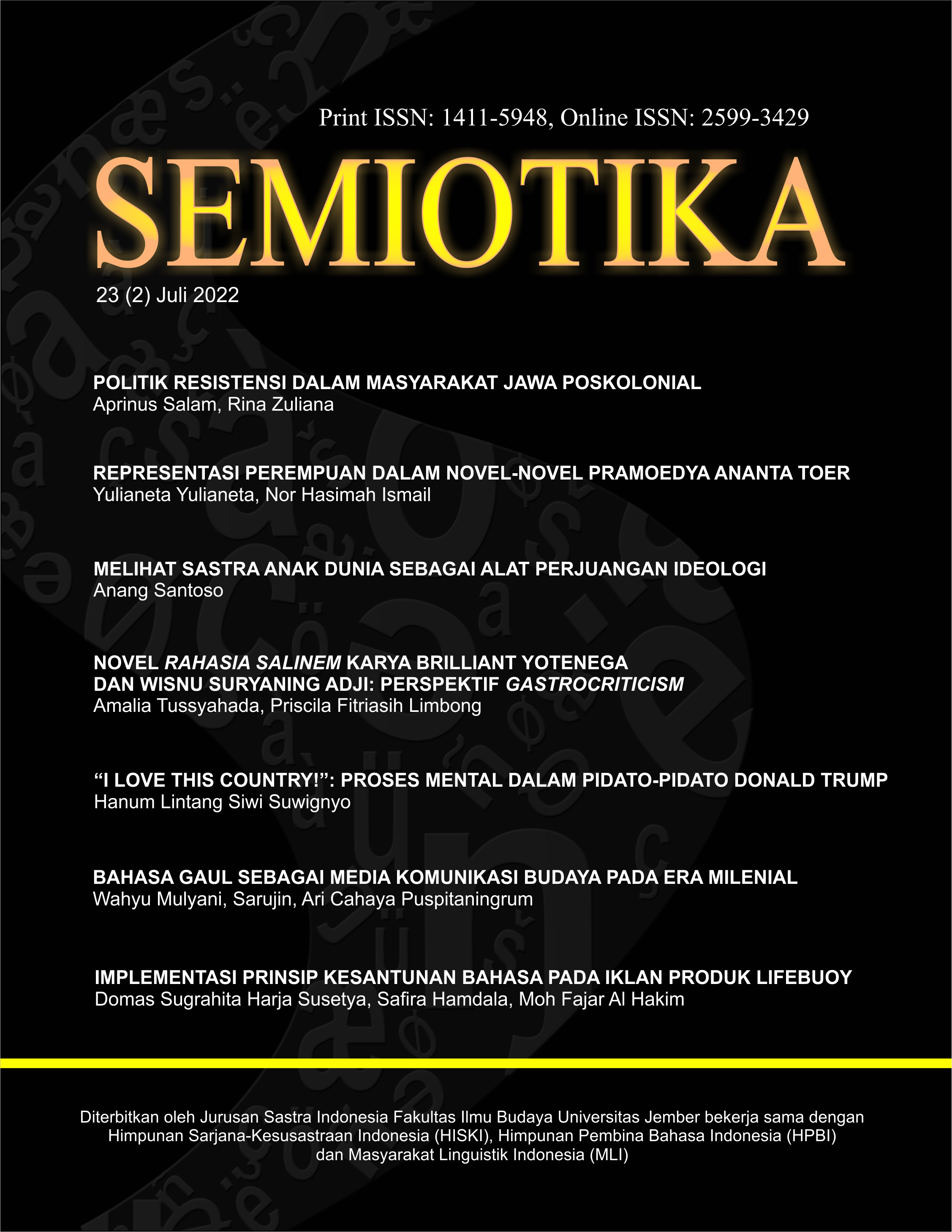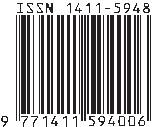BAHASA GAUL SEBAGAI MEDIA KOMUNIKASI BUDAYA DI ZAMAN MILENIAL
Abstract
This study aims to discuss (1) adolescent slang in the form of abbreviations in the WhatsApp
(WA) group of national-level short story writing competitions, (2) youth slang in the form of
words in the WA group, and (3) slang as a medium of cultural communication in the millennial
era. The research method uses qualitative methods. The research data were taken from two WA
groups in the national-level short story writing competition. Data collection techniques using
listening and tapping techniques. The time used for data collection is half a year, from July
2021 to December 2021. The results show ten forms of abbreviations and fifteen forms of
words. Ten forms of abbreviations used by teenagers in chatting in the WA group of nationallevel
short story writing competitions have variety, including abbreviations in English and
Indonesian. The fifteen-word forms used by teenagers in chatting in the group also varied; nine
words came from English, six words came from Indonesian, there were variations in
Indonesian words whose spellings were reversed (from the middle and behind), and There were
two Jakarta dialect words. These findings represent adolescent self-identity. Communication
in the form of chatting is a youth culture, so there is a national-level short story writing
competition in the WA group, which feels that teenagers tend to use slang. The number of
English teenagers use in cultural communication shows that they want to be seen as modern
and cool. By being looked at like that, teenagers feel happy and proud because they feel they
are not out of date. The findings from the study show that millennial youth have creativity in
communicating through abbreviations and variations of English to represent the context of
contemporary culture that is modern, cool, and proud.

This work is licensed under a Creative Commons Attribution-ShareAlike 4.0 International License.
SEMIOTIKA has CC-BY-SA or an equivalent license as the optimal license for the publication, distribution, use, and reuse of scholarly work. Authors who publish with this journal retain copyright and grant the journal right of first publication with the work simultaneously licensed under a Creative Commons Attribution-ShareAlike 4.0 International License that allows others to share the work with an acknowledgment of the work's authorship and initial publication in this journal.
Attribution-ShareAlike
CC BY-SA










